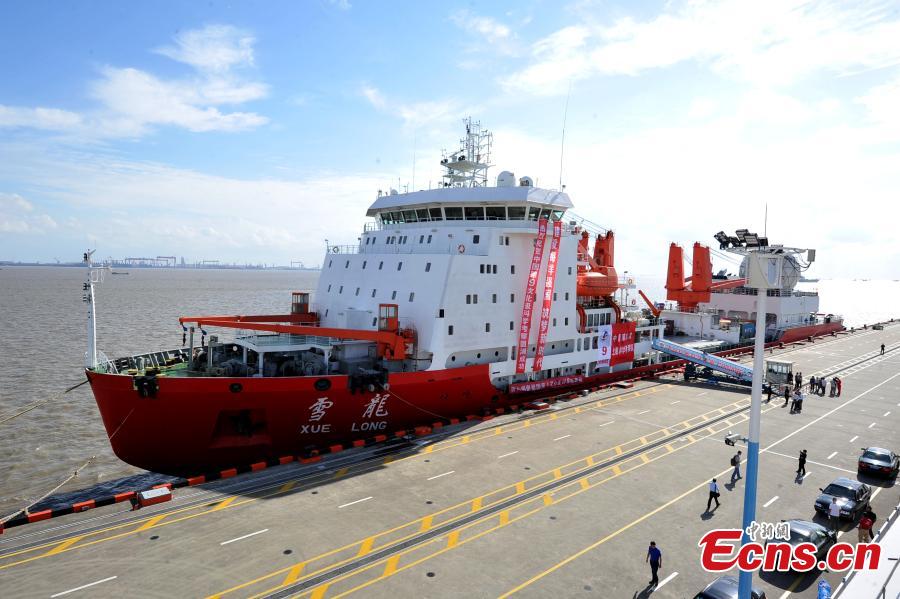
China's research icebreaker Xuelong is seen at a dock in east China's Shanghai, Sept. 26, 2018. Researchers on China's research icebreaker Xuelong returned to the home port in Shanghai Wednesday after finishing the country's 9th Arctic expedition. The Icebreaker, also known as the Snow Dragon, carrying a research team, spent 69 days on its journey. Scientists and researchers have conducted a series of investigations into the marine environment, submarine topography, ecology, fishery, sea ice and shipping routes in areas including the Bering Sea, Chukchi Sea, Canada Basin and the central Arctic Ocean. (Photo provided to China News Service)

China's research icebreaker Xuelong is seen at a dock in east China's Shanghai, Sept. 26, 2018. Researchers on China's research icebreaker Xuelong returned to the home port in Shanghai Wednesday after finishing the country's 9th Arctic expedition. The Icebreaker, also known as the Snow Dragon, carrying a research team, spent 69 days on its journey. Scientists and researchers have conducted a series of investigations into the marine environment, submarine topography, ecology, fishery, sea ice and shipping routes in areas including the Bering Sea, Chukchi Sea, Canada Basin and the central Arctic Ocean. (Photo provided to China News Service)

China's research icebreaker Xuelong is seen at a dock in east China's Shanghai, Sept. 26, 2018. Researchers on China's research icebreaker Xuelong returned to the home port in Shanghai Wednesday after finishing the country's 9th Arctic expedition. The Icebreaker, also known as the Snow Dragon, carrying a research team, spent 69 days on its journey. Scientists and researchers have conducted a series of investigations into the marine environment, submarine topography, ecology, fishery, sea ice and shipping routes in areas including the Bering Sea, Chukchi Sea, Canada Basin and the central Arctic Ocean. (Photo provided to China News Service)























